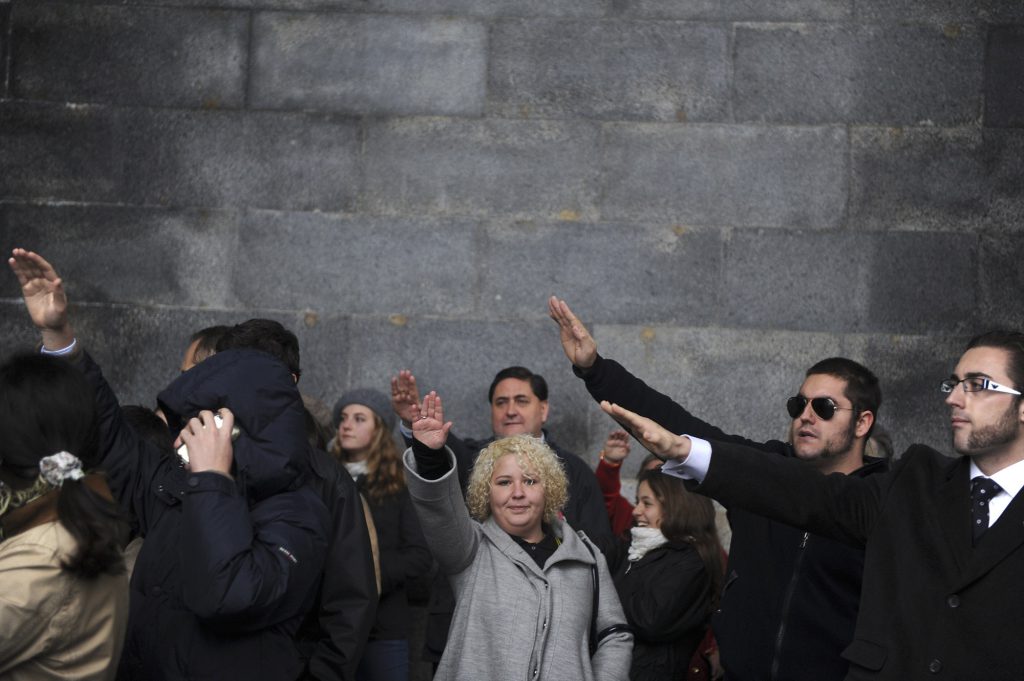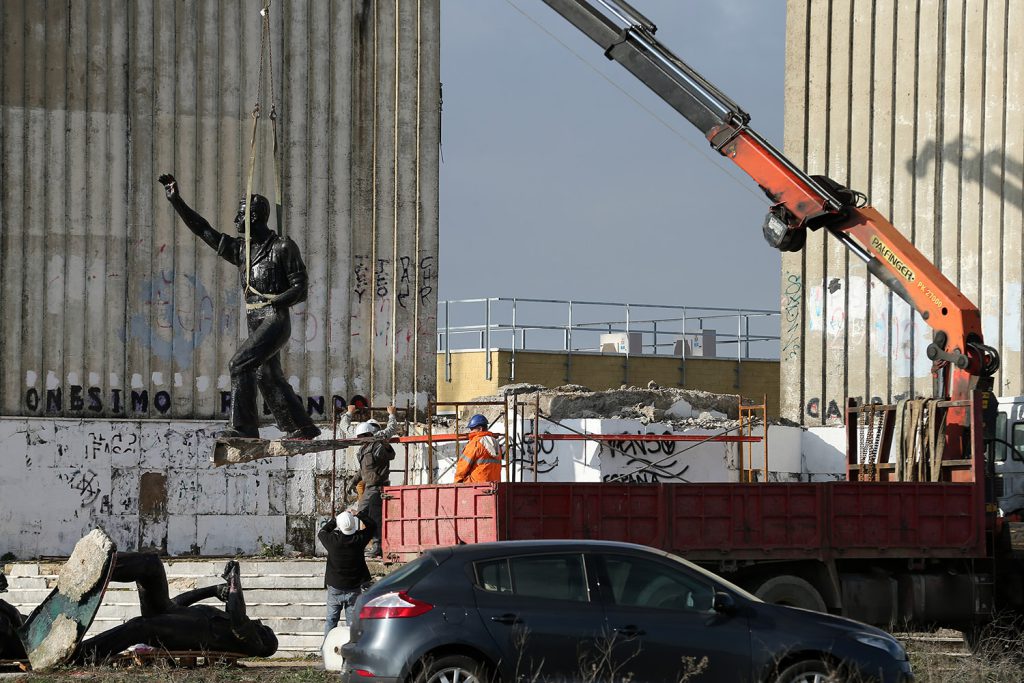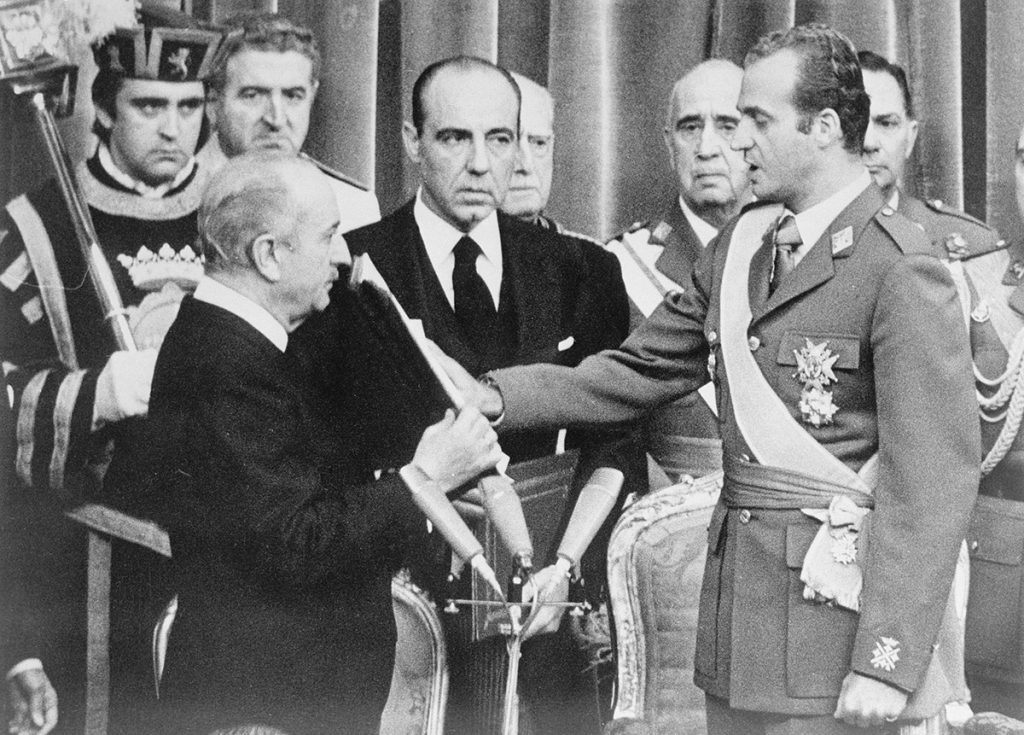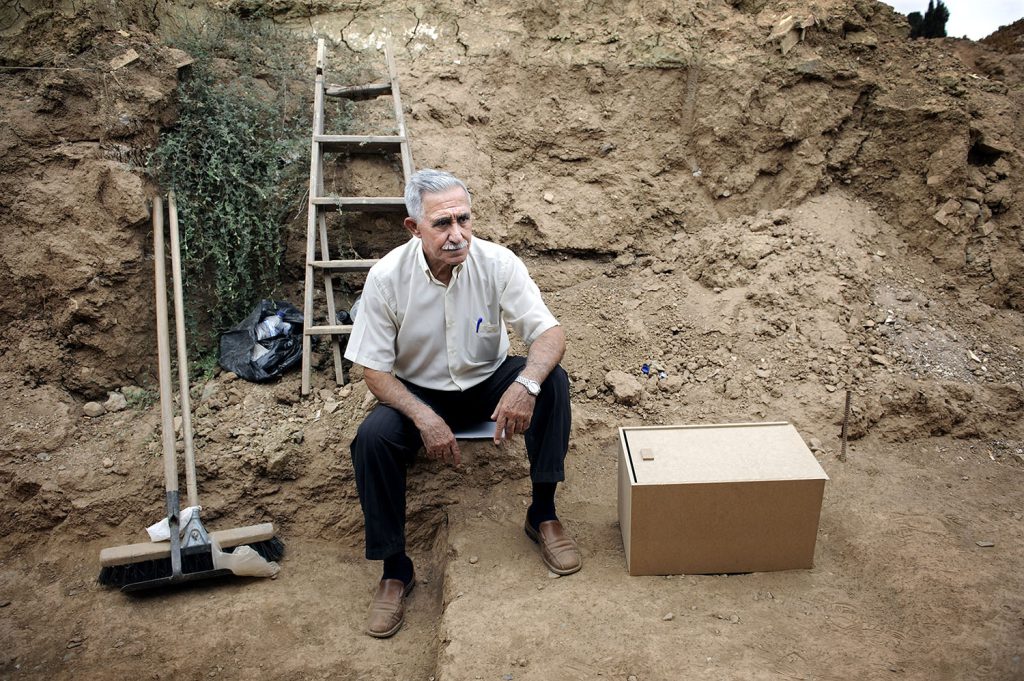In Spain’s Silence, Francisco Franco’s Memory Echoes

The Spanish dictator Francisco Franco has a reputation for refusing to go away, even decades after his death. The general took power after winning the Spanish Civil War in 1939 and held it for nearly four decades, long after fascism was ousted from the rest of Western Europe. Despite having been allies with Adolf Hitler and Benito Mussolini, some clever Cold War politicking allowed the wily dictator to remain in control. He stubbornly clung to power even as his body failed him, until he finally succumbed to disease on November 20, 1975. Starting that year, comedian Chevy Chase introduced a running joke on NBC’s Saturday Night (now Saturday Night Live) reporting, over and over again, “Our top story tonight: Generalissimo Francisco Franco is still dead.”
That joke still works today.
More than 40 years after he was buried, Franco continues to dominate political debate in Spain and capture headlines in domestic and international papers alike. On September 13, Spain’s parliament voted to exhume the dictator’s remains from the Valley of the Fallen, the giant stone mausoleum Franco had built to immortalize himself and his fascist political project. Buried alongside Franco are up to 70,000 people who died fighting on both sides of the Civil War. While the monument was constructed to purportedly honor all who died in the war, regardless of their ideology or party affiliation, many of those who fell resisting Franco’s fascism were reburied there without the knowledge or consent of their kin. As Deputy Prime Minister Carmen Calvo, a member of the ruling Socialist party, explained, the initiative to remove Franco is intended as an act of respect toward his victims: “There is neither respect, nor honor, nor justice, nor peace, nor concord as long as the remains of Franco are kept in the same place as those of his victims.”
The move is a crucial step toward achieving historical justice for the Spanish state, which until now has largely avoided any public reckoning with Franco’s legacy. In Spain, revisionist historians who produce sympathetic accounts of the dictatorship continue to hold prominent government and university positions throughout the country. Plazas, streets, and monuments named for prominent fascists can still be found in Spanish villages and cities. And the country’s 1977 Amnesty Law prevents not only prosecution but even any legal investigation of the over 130,000 forced disappearances stemming from the Civil War and dictatorship.
I spent 19 months between 2009 and 2013 doing ethnographic fieldwork with a collection of civil society organizations known as the “historical memory movement,” which is fighting to recover the disappeared, publicly honor their legacy of resisting fascism, and advocate for government support in these endeavors. Over and over again, children and grandchildren of the disappeared told me of their ongoing suffering caused by not knowing where their loved ones are buried. This pain, many of them emphasized, was compounded by their daily interactions with plazas and monuments named for those who organized the killings and forced disappearances of their kin.
I emerged from this experience with a feeling of ethical obligation to contribute to searches for the missing. I could not just be an observer in the corner with a notebook; I needed to work in solidarity with those combating the legacy of Spanish fascism.
Perhaps surprisingly, the historical memory movement continues to face significant opposition. The announcement of Franco’s exhumation was not met with unanimous approval. Earlier this year, the dictator’s grandchildren declared their refusal to cooperate with the initiative. Nearly 1,000 protestors rallied in opposition to the decision, many raising their arms in fascist salutes. And the spokesperson for the opposition People’s Party accused the ruling Socialist government of “reopening wounds, dividing society, or putting the principles of reconciliation at risk.”
To outsiders, it can be difficult to understand why, 40 years after the return of democracy, Spanish politics continues to be dominated by Franco. It is hard to imagine similar debates elsewhere: There are no monuments for Hitler in Germany, no prominent Italian historical foundation (like Spain’s National Francisco Franco Foundation) is named after Mussolini, and no amnesty exists for those who participated in Argentina’s “dirty war,” and rightly so. It is time for Spain to follow suit.
Spain’s reluctance to reckon with its past can be traced back in part to its fraught democratic transition. Today, when countries want to transition away from dictatorships, civil wars, or mass human rights violations, they can select from a plethora of well-developed post-conflict policies. But at the time of Franco’s death, international policy experts did not yet consider transitional justice mechanisms like truth commissions, war crimes tribunals, forensic exhumations, bureaucratic purges, and even independent civil society organizations to be essential components of post-conflict political reconstruction. Following then-contemporary ideas of best practices, Spain’s transition took the form of a series of negotiated agreements or “pacts” between Franco’s successors and the recently legalized Socialist and Communist parties.
The most famous—or perhaps infamous—of these was the so-called “pact of oblivion” (also often called the “pact of forgetting”), a tacit agreement among the political elite not to legislate, litigate, or publicly discuss the recent past. Politicians hoped that silencing divisive debate over the dictatorship would allow them to unify around the project of building a common, democratic future. Initially, the deal seemed to work. As living standards rose and democratic institutions consolidated, international policy experts began speaking of a “Spanish model” of democratic transition for other countries to follow. In practice, this meant that the foundations of Spanish democracy were built upon the public silencing of those most directly affected by Franco’s violence.
As the present controversy over what to do with Franco’s remains demonstrates, the past is not so easily laid to rest.
The pact of oblivion may have enforced a silence among Spanish politicians. But words are not the only means through which political messages are conveyed. The physical spaces people navigate in their everyday lives also shape public life in subtle but significant ways. Monuments like the Valley of the Fallen, and mass graves, were explicitly designed to encourage supporters and terrorize opponents of Spanish fascism. The inability of successive democratic regimes to remove Franco’s monuments or examine mass graves allows these physical sites to continue projecting the messages of the dictatorship. As citizens navigate their daily lives—walking through streets named for fascists, seeing stone shrines to Franco’s “martyrs,” or passing by mass graves—they have no choice but to interact with the physical infrastructures of the Franco regime.
From time to time, these unaddressed remnants of the dictatorship impose themselves on political debates in the present. In 2013, at the height of the European debt crisis, it was revealed that the Valley of the Fallen was in such a state of disrepair that it endangered visitors. Over the bitter complaints of the historical memory movement, the right-wing People’s Party dedicated some 287,000 euros to restore the monument. For many Spaniards, the fact that Franco could still command significant public expenditures, even while the government implemented draconian cuts to public services, demonstrated the Generalissimo’s ongoing ability, even after death, to insert himself into everyday politics.
The capacity of the dictatorship to influence the present goes beyond the material landscape. Spain’s transition did not affect the dictatorship’s criminal judgments. As a result, those convicted and later executed by Franco’s kangaroo courts for the crime of “rebellion”—as the dictatorship labeled the act of defending Spain’s democratically elected Second Republic—still today are officially viewed as having been enemies of the state.
Similarly, the lack of any official program to rid bureaucracies of fascist undertones means that many state institutions continue to reflect the dictator’s worldview. For example, the entry for Franco in the first edition of the Spanish Royal Academy of History’s Spanish Dictionary of Biography was assigned to Luis Suárez, a historian tied to the Valley of the Fallen and the National Francisco Franco Foundation. Unsurprisingly, Suárez produced a whitewashed version of history, which omits any discussion of Franco’s violent repression of dissidents, credits him for keeping Spain out of the Vietnam War, and describes him as an “authoritarian but not totalitarian” leader, rather than as a dictator.
Finally, there were never any direct reparations to those most affected by the dictatorship’s violence. Relatives of the disappeared are unable to claim state aid in locating and exhuming their loved ones, who remain buried in unmarked mass graves.
Despite these restrictions, the scientists, activists, and relatives of the disappeared who constitute the historical memory movement have been working since 2000 to challenge Spain’s political settlements. With only minimal state support, they have organized forensic exhumations to recover the disappeared and combat impunity for the dictatorship’s crimes. For these activists, recovering the dead is about more than just fulfilling the rights of kin to give their loved ones a proper burial. It is also about completing the still-unfinished project of transitioning Spain from dictatorship to democracy.
“Generalissimo Francisco Franco is still dead”—but the material and institutional world he built continues to project his power, long after his demise. Exhuming the body of the dictator from the mausoleum he designed is an important first step. But addressing the persistent influence of the dictatorship requires a broader program to dismantle the physical and institutional sites through which Franco continues to influence Spanish politics today.
Slowly but surely, the historical memory movement’s efforts are changing Spain’s relationship with its past. Over the past two decades, exhumations and commemorations of Franco’s victims have become a regular feature of news media. As the historical memory movement gains more visibility, politicians have begun responding to its demands. In 2007, the last time the Socialist Party was in power, the government passed the Law of Historical Memory, which, while still avoiding state responsibility for locating the disappeared, provided limited state funding for nongovernmental organizations to conduct exhumations. The law also mandated the removal of some fascist monuments, though implementation has been spotty at best. The new initiative to remove Franco from the Valley of the Fallen represents the state’s largest step to date toward fulfilling its legal and moral obligations to the disappeared and their families. Yet there is still much more to do.
At a minimum, the state must fulfill its institutional and legal responsibilities to locate and identify the disappeared, including those buried in the Valley of the Fallen next to the dictator who orchestrated their deaths. It must also alter the legal and institutional landscape that continues to treat Franco’s victims as enemies of the state. And it must dismantle or recontextualize the physical spaces that support Franco’s ideology.
Relatives of the disappeared advocate for transforming the Valley of the Fallen into an educational center. Like the former Nazi concentration camps, the mausoleum could become a destination for schoolchildren, tourists, and the general public to reflect on some of Spain’s darkest hours. At a time of rising authoritarianism around the world, dismantling Franco’s material legacy and converting it into a space for critical refection on the horrors of fascism would represent an act of justice for the dictator’s victims. But it would also send a sorely needed message to the world about the importance of defending democracy.
































